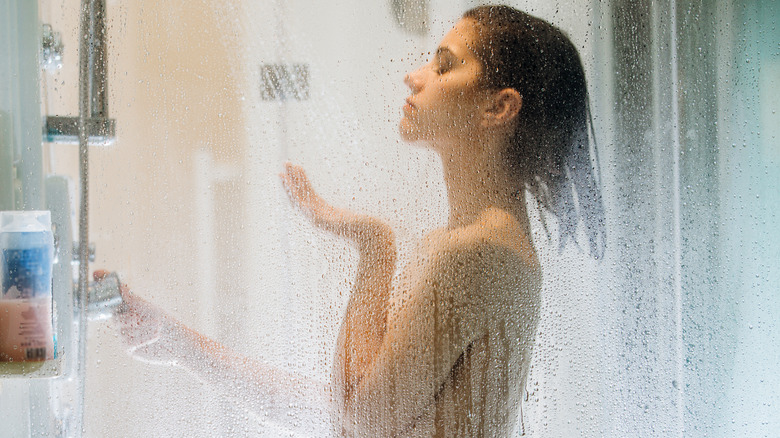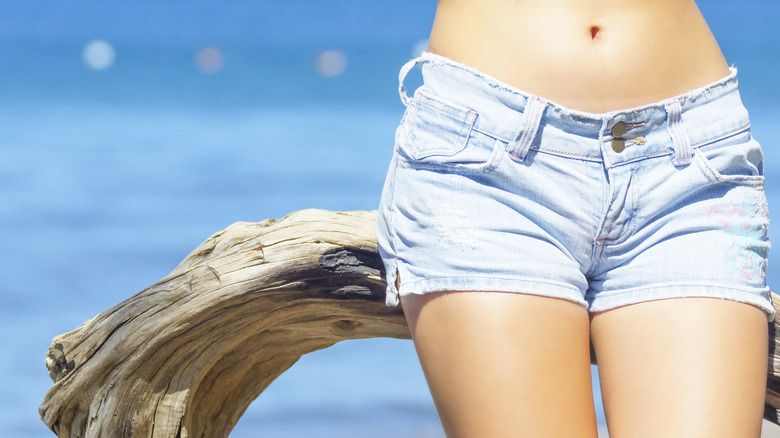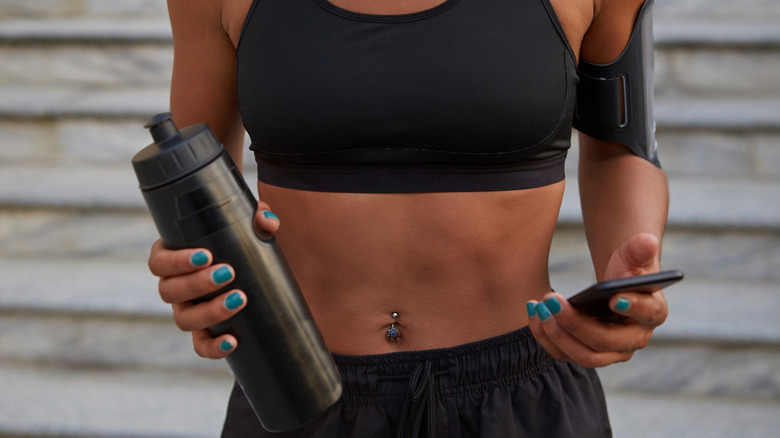None Of Us Are Cleaning Our Belly Buttons Enough — Here's Why That's A Problem
In case the last time you thought seriously about your belly button was the day it was created, you're in good company. It joins the bottom of your feet, the middle of your back, and behind your ears club: the place where neglected body parts go to enjoy a lifetime of getting vigorously ignored.
If you can reach your belly button while you're taking a shower, you should be washing it, and that's especially true in the summertime. Believe us when we tell you we all forget, but when it gets warmer and we perspire more, the sweat, heat, and skin-on-skin action that is your belly button can become a petri dish of bacteria. Take a moment to remember to wash it and avoid skin issues later on. If this is sparking an overall hygiene upgrade extravaganza in you, the next time you're in the bathroom, remember that none of us are cleaning our hairbrushes enough either.
Extra guidelines for washing your belly button
Although soap and water work wonders on every inch of your skin, there are a few extra tips you should take when cleaning the belly button. If you get on the few times-a-week program for belly button dirt and buildup removal, that's frequent enough.
If you're an innie, you've got some homework. Right before your next shower or bath, dip a Q-tip (or cotton-tipped swab) in rubbing alcohol and swab the decks with it, rotating it around the interior of your belly button. Use a new alcohol-soaked Q-tip until the last one comes out clean. Then take another Q-tip, dip it in water, and repeat to remove any alcohol, which is drying. After you wash yourself and your belly button in the shower, gently dry it with a bit of a towel.
If you have an outie, skip the alcohol Q-tips, wash, dry, and then moisturize with lotion. Don't use lotion on an innie because it may breed bacteria. If you have a piercing, use the appropriate directions above, plus soak a cotton ball in a solution of ¼ teaspoon of salt boiled in 8 ounces of water. Once that solution has cooled completely, saturate the area.
Why this is important
Pardon us for getting explicit, but you need to know that a neglected belly button can accumulate oil and dead skin cells. This may eventually create what is called an "omphalolith." They get black over time and need to be pulled out with tweezers, although they're considered somewhat rare. They're similar to the blackheads that can form on your face, back, or butt, (yes, your butt gets acne, and here's how to clear that up). Wash the area as we've suggested to eliminate the problem.
Amazingly, you can develop a yeast infection in an innie because the skin folds in on itself. Plus, it's usually dark, covered, and gets humid from perspiration. This creates conditions for bacteria to grow. And whether or not you have a yeast infection, if it's not cleaned, your belly button can start to smell bad. If you have a discharge (it might be yellow or green) or blisters near the site of a piercing, you might have an infection, which is another reason to make a special effort to keep it clean.


